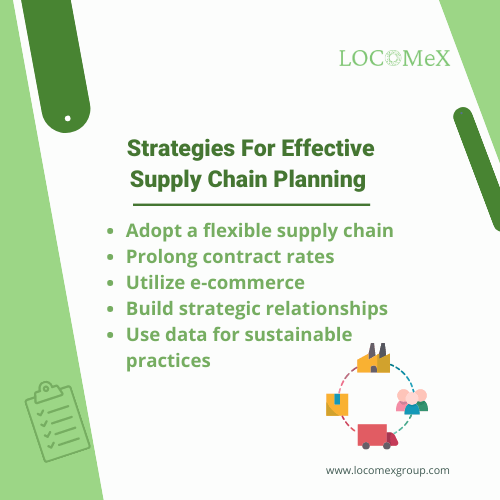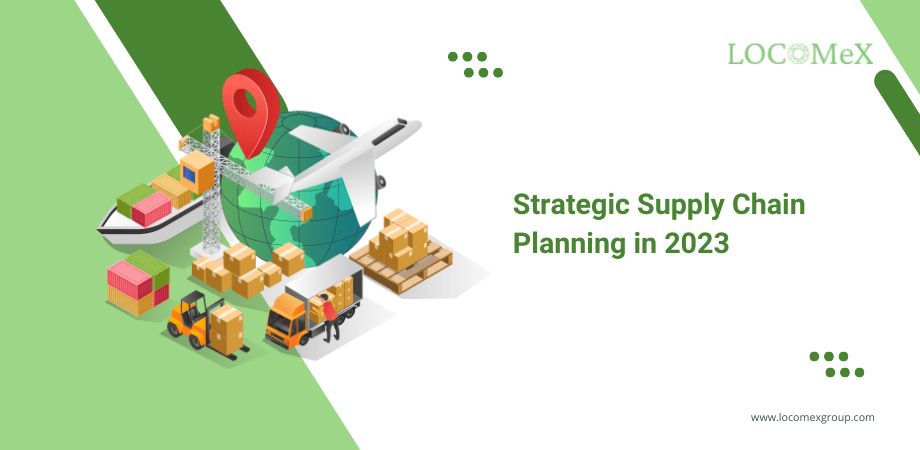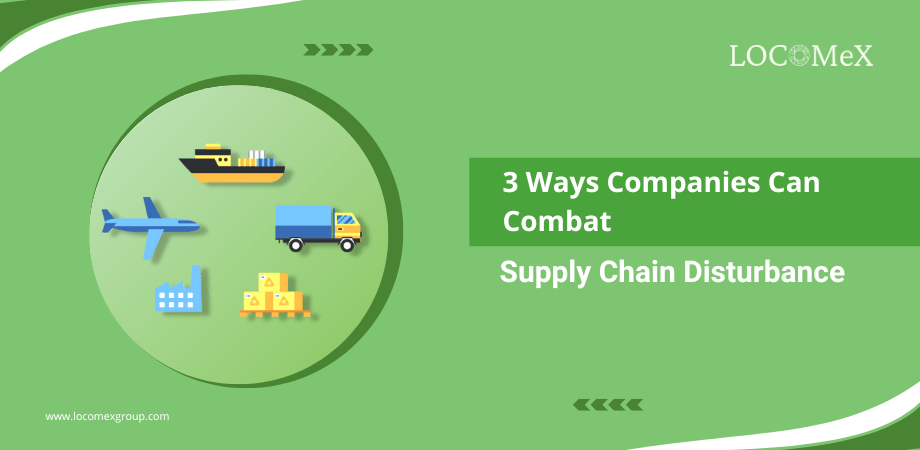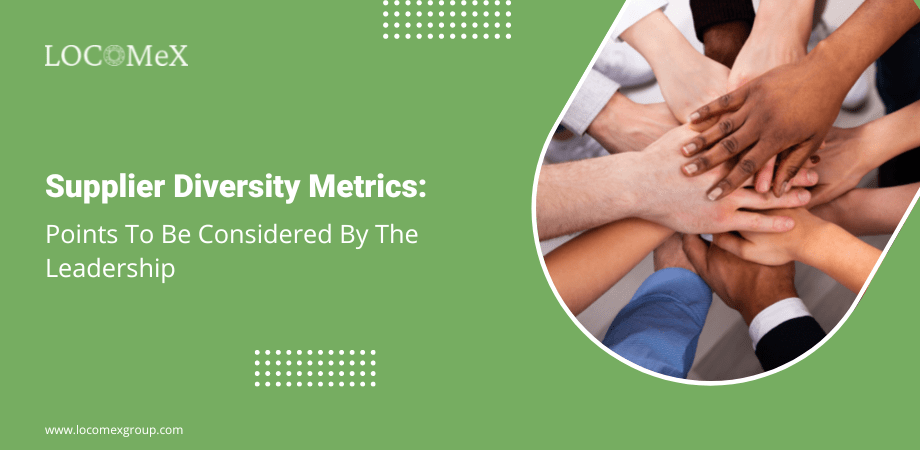The logistic and the entire supply chain industry has significantly transformed over the past year due to various supply chain disruption caused by the COVID-19 pandemic. However, as we enter 2023, many businesses are still grappling with the uncertainties and challenges of an ever-evolving marketplace. Despite these challenges, companies can adopt several sourcing strategies to stay ahead of the curve and achieve success according to industry trends and consumer demands. Taking a proactive approach and simplifying logistics operations and inventory management is crucial. This article will explore five effective business strategies for supply chain management in 2023.
Strategies For Effective Supply Chain Management
In today’s rapidly evolving business environment, flexibility and agility are no longer optional but essential to successful logistics and supply chain visibility. While it may seem counterintuitive, planning can help increase flexibility and agility, especially in supply chain risk disruptions such as political upheavals, labor disputes, natural disasters, pandemics, and cybersecurity breaches.
Building long-term, trusted partnerships with supply chain service providers has become more critical than ever. Such relationships help simplify the supply chain process, providing open, ongoing communication exists.
The effective approach is to shorten RFP (request for proposal) cycles when needed and expand your the best supply chain management services. Paying close attention to regional, niche providers and those offering alternative capacity solutions can also be beneficial.
2. Prolong contract ratesIn the supply chain and logistics industry, timing is everything. While it may seem tempting to lock in contract rates as soon as possible, holding off can be a strategic move for businesses looking to optimize their cost containment in 2023.
By taking advantage of the lower spot rates at the start of the year, businesses can keep their transportation costs down and adopt sustainable efforts. Then, before the produce season begins in the March-April timeframe, they can look to lock in a 12-month rate agreement, benefiting from the cost and capacity certainty it provides.
With freight rates anticipated to climb as the year progresses, a contract rate agreement can help businesses stay ahead of the curve and avoid the volatility of the spot market. Businesses can balance short-term cost savings, long-term stability, and profitability by strategically timing their contract rate agreement.
In short, prolonging contract rates may feel counterintuitive, but it can be smart for businesses looking to navigate the ever-changing logistics and optimize the supply chain technology of 2023.
3. Unlock the power of e-commerce and omnichannel strategiesAccording to the 2021 Annual Industry Reports provided by MHI, COVID-19 has led to a significant increase in the adoption of digital technologies in supply chain operations, with 49% of leaders accelerating their spending to improve responsiveness and future readiness.
Therefore, businesses must use the latest supply chain trends and integrate multiple management systems. It means leveraging artificial intelligence and machine learning technology to optimize supply chain risk management and improve customer service.
By embracing best enterprise supply chain optimization software , logistics services can stay ahead of the curve, capitalize on new opportunities, and position themselves for long-term success in the ever-evolving supply chain management trends.
Also, transportation management systems are evolving to support omnichannel operations and improve order optimization, visibility, and transparency in fulfillment. These systems streamline business operations and ensure that companies leverage all available distribution options for maximum efficiency in delivering products to customers.

Maintaining long-term logistics and freight partnerships is crucial for suppliers and third-party logistics providers. By establishing trust and understanding market conditions, both parties can reduce supply chain risk, gain customer loyalty, and provide sustainable software solutions.
To ensure a potential partnership is a right fit, vendors can ask for examples of when they turned away business because it wasn’t the best fit. It demonstrates the provider’s self-awareness and commitment to finding the right partnerships rather than just taking any job.
The best AI-powered supply chain optimization software offers integrated solutions that improve information flow and enable supply chain managers to optimize supply chains from design to delivery.
5. Harness the power of data for sustainable practicesData is the key to unlocking value in today’s logistics and supply chain landscape. The industry is so complex that the old way of keeping track of transactions on paper or in Excel is no longer adequate. It is best if more supply chain managers can gather maximum data, thereby improving customer service.
Moreover, if consumers know that the business they are working with cares about the environment, they are more likely to become repeat clients. Because of this, sustainability in the areas of logistics and supply chain is an important factor.
Sustainable warehousing operations require a focus on several key factors, including energy efficiency, eco-friendly packaging, and environmentally friendly transportation. Reducing electricity consumption for lighting minimizes a warehouse’s carbon footprint while managing costs. Using packaging materials made from sustainable materials can reduce waste and appeal to eco-conscious consumers; additionally, from sustainable sourcing of raw materials to measuring transportation-related greenhouse gas emissions, replacing with electric vehicles to reduce carbon emissions associated with logistics operations.
Suppliers can minimize their environmental impact and appeal to consumers seeking eco-friendly products and services by taking a supply chain resilience. Embracing sustainable practices can create a competitive advantage for businesses and contribute to a healthier planet.
Key Takeaways
In response to the rapidly changing consumer demands, it is essential to stay dedicated and flexible to succeed in key supply chain management in 2023. Even in difficult or uncomfortable circumstances, supply chain professionals must make informed decisions with an open mind. Even though the business environment may differ from previous years, the right supply chain technology trends can have a significant positive impact when implemented.
LOCOMeX’s best supply chain optimization software revolutionizes business strategy and supply chain management. They are leading the way in integrating data-driven solutions with artificial intelligence to help supply chain organizations achieve their strategic objectives while enhancing their manufacturing operations sustainably and ethically.
With their specialized expertise, LOCOMeX provides top-tier supply chain optimization solutions to businesses, allowing them to improve their manufacturing processes through cutting-edge technologies. Their innovative approach to understanding customer behavior transforms the industry, enabling companies to manage costs and meet their goals while remaining socially responsible.




